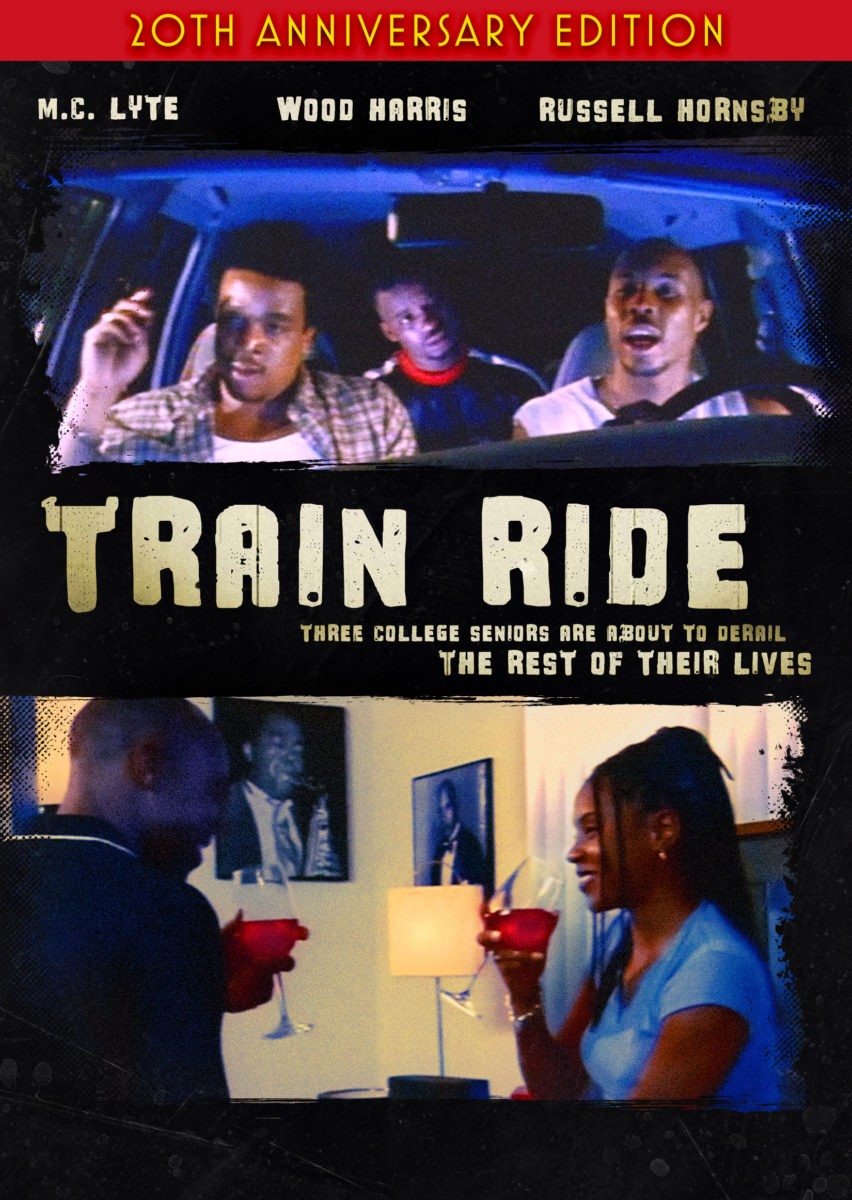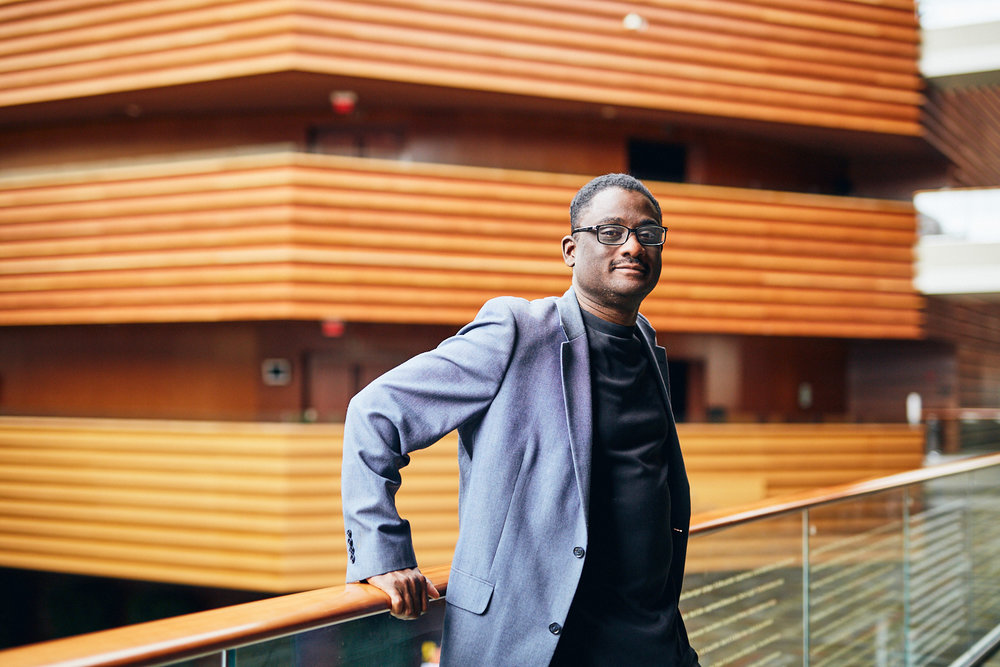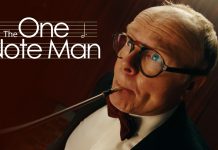Rel Dowdell
“The film was catharsis for many who saw it.”
Philadelphia-based film-maker Rel Dowdell has been generating new buzz in the last year or so, thanks to the 20th Anniversary reissue of TRAIN RIDE, a college drama focusing on the cause and consequence of a sexual act in an all-black American college by three of its’ male students on a vulnerable female student.
In addition to this, his documentary WHERE’S DADDY?, which is available on key streaming platforms, is an important work focusing on the issue of child support in his locality.
Film and TV Now recently interviewed the director, as he reflected on TRAIN RIDE’s impact two decades on.
FILM AND TV NOW: TRAIN RIDE remains very relevant today two decades after its’ release in the context of the issue of #MeToo and the shadow of the Weinstein trial. How relevant did it feel when you made it back around 1999?
REL DOWDELL: Good question, John… I knew the film and its content were before their time. The topics the film deals with, I knew, would be unsettling for viewers.
Now that I think about it, I don’t think an African-American film-maker had tried to deal with those issues in Train Ride before. I remember showing the short film version in Harlem, New York at an event called Young Black Film-makers at the Schomburg Theater, and it had a profound effect on the audience.
FTVN: You are based in Philadelphia, a city that has been immortalised thanks to the likes of ROCKY, M. Night Shyalaman’s THE SIXTH SENSE and Jonathan Demme’s PHILADELPHIA. What makes the city such a wonderful hive of creativity and how is it different to the more widely-used locations in the USA like a Chicago, LA or New York?
RD: I think Philadelphia and its surrounding areas are prime shooting places for film-makers because they can be very versatile to the look of the film. Any type of environment one is looking for, it can be realized in this area.
Peter Weir’s classic 1985 film Witness used both the city and the country best. The brilliance of using the city as a character backdrop in Rocky is peerless, and The Sixth Sense is so well done that I sometimes forget it was made in Philadelphia.
FTVN: The film was – and is – still regarded as a popular college film. Tell us about the marketing and promotion of the film and how you platformed its’ release originally.
RD: The film was originally approached by Will Smith and his production company to make the film. Things didn’t work out at the last minute. To this day, I wonder how the film would have turned out if it took that route to getting made.
As you know, John, making and producing an independent film brings many challenges, especially with marketing. Some of the marketing happened to come about unexpectedly. For instance, the late, celebrated actress Ms. Esther Rolle passed away shortly after participating in the film.
When the media found out that the film featured her last performance, interest piqued on many levels. Plus, there were some up and coming actors in the film like Wood Harris (“Creed II”) and Russell Hornsby (“Fences”) as well as female rap pioneer MC Lyte as the main female character who gave dynamic and emotionally moving performances.

FTVN: Was the film inspired by any real-life scandal at colleges and what was the reaction of the education establishment upon its’ original release?
RD: The film’s inspiration was drawn from the stories from colleges all over at the time, Black and White. I was invited to screen the film at many colleges across the nation after its release.
The film was catharsis for many who saw it. I remember one young lady who saw the film at Prairie View University in Texas who wrote a very solemn and unforgettable poem called “Wash Away.” It was obvious that she wrote the film based on her personal experience.
Then, at The Milton Hershey School in Hershey, PA after a screening, a young male student on the football team sent me an email about how much the film changed his perspective on how to treat women. I can recall many stories like that.
FTVN: Did you do much research into date rape drugs and other substances of a similar power?
RD: I did. There was no internet back then to do research on, but I knew that particular drug in the film did exist, and it was coming from overseas.
FTVN: Tell us about your cast.
RD: Awesome. Wood Harris was perfectly cast as the lead villain character of “Will.” That was his first lead role. There’s one single take scene that he has in the film that is quite remarkable.
Russell Hornsby was great also. I gave him his first break into film. He was at Boston University in the acting program when I was in the graduate film program. He was in the original short film version of Train Ride. His performance in the feature is wonderfully brooding. He becomes more and more of a powder keg as the film goes on.
MC Lyte was a revelation as the main female character of Katrina. It was tough at the set sometimes, for she would really be crying hard after her scenes. We had to hold up shooting sometimes so she could get herself together. She really gave 110% to her performance in the film.
Thomas Braxton, Jr. and Nicole Prescott where superb and layered supporting characters. Needless to say, the late, great Esther Rolle was powerful in her scenes. She literally rearranged her dialysis treatments to participate in the film. The film was dedicated to her memory.
Related post: Ashfall Review: Hold On To Your Popcorn & Enjoy This Visual Treat
FTVN: Tell us about your production team.
RD: I think everyone did a commendable job. The film was shot entirely at Cheyney University, which is the oldest African-American college in the nation.
It was a tough shoot, for the dorm rooms were small, and some hallways were challenging the shoot in. However, once the production team adjusted, it went well. It was my first time directing a feature film, but there was no point that I felt overwhelmed.
FTVN: How did you raise finance for the film and how long did it take to shoot?
RD: I got involved with a company called Extreme Pictures that was looking to get into feature films. Train Ride was the first feature film they produced. I believe the film was shot in around 30 days.
FTVN: Film-makers like John Singleton and Spike Lee were flying the flag for black film-makers with films like BOYZ N THE HOOD and DO THE RIGHT THING. Are there other black film-makers from your locality that were making an impact around the same time you were with TRAIN RIDE?
RD: I don’t believe so. Train Ride was one of a kind. The subject matter was not something African-American film-makers were dealing with back then. It as shied way from.
Now, you see the subject as part of the narratives of TV shows and films all the time. I remember when the DVD for Train Ride came out, it sold so well that at one point, it was in the top 10 best selling African-American DVDs on Amazon.
FTVN: Diversity and gender have come to the fore recently, particularly in terms of opportunity and recognition from the industry. Where do you feel the industry is in terms of these factors at present?
RD: There still is a long way to go. There could be a lot more diverse representation in film and TV with ideas and casting. Often times, the same narratives are being told.
There is so much more to say. I have some ideas for TV and film that are cutting edge that I know would lay more tracks to innovative storytelling. All it takes is opportunity.
FTVN: Along with TRAIN RIDE, your film WHERE’S DADDY?’s highlighted another key issue about child support. The two films focus on two very important and serious matters. What other subjects are you keen to tackle in a similar vein?
RD: The sky’s the limit. I really don’t have an umbrella to stay under when it comes to subject matter. If it interests me, I want to take chance at trying to make it. You never know unless you try.
FTVN: Changing briefly the subject, how is the city and local film industry coping with the lock-down?
RD: It’s been really tough. There is an uneasy sense of paranoia every time one leaves the house. No one wants to catch this calamity. It affects every individual differently.
It strangely reminds me of an unnerving 1977 David Cronenberg film called Rabid. Marilyn Chambers had this disease, and it started an epidemic.
FTVN: Finally, what are you most proud of about TRAIN RIDE and what would you like people to come away from their experience of viewing the movie?
RD: John, I’m most proud that the film has held up well for two decades, and noted film critics and erudite film minds like you are seeing it and giving it attention. That’s very rewarding to see as an independent film-maker.
I hope when people see it, that it let’s them know how close the subject matter can hit to home. What happens in the film can happen to anyone, regardless of race. I hope people check it out if they haven’t seen it.
It can currently be seen on Comcast Pay Per View and Dish TV Pay Per View. It can also be purchased as a DVD on Amazon.





























